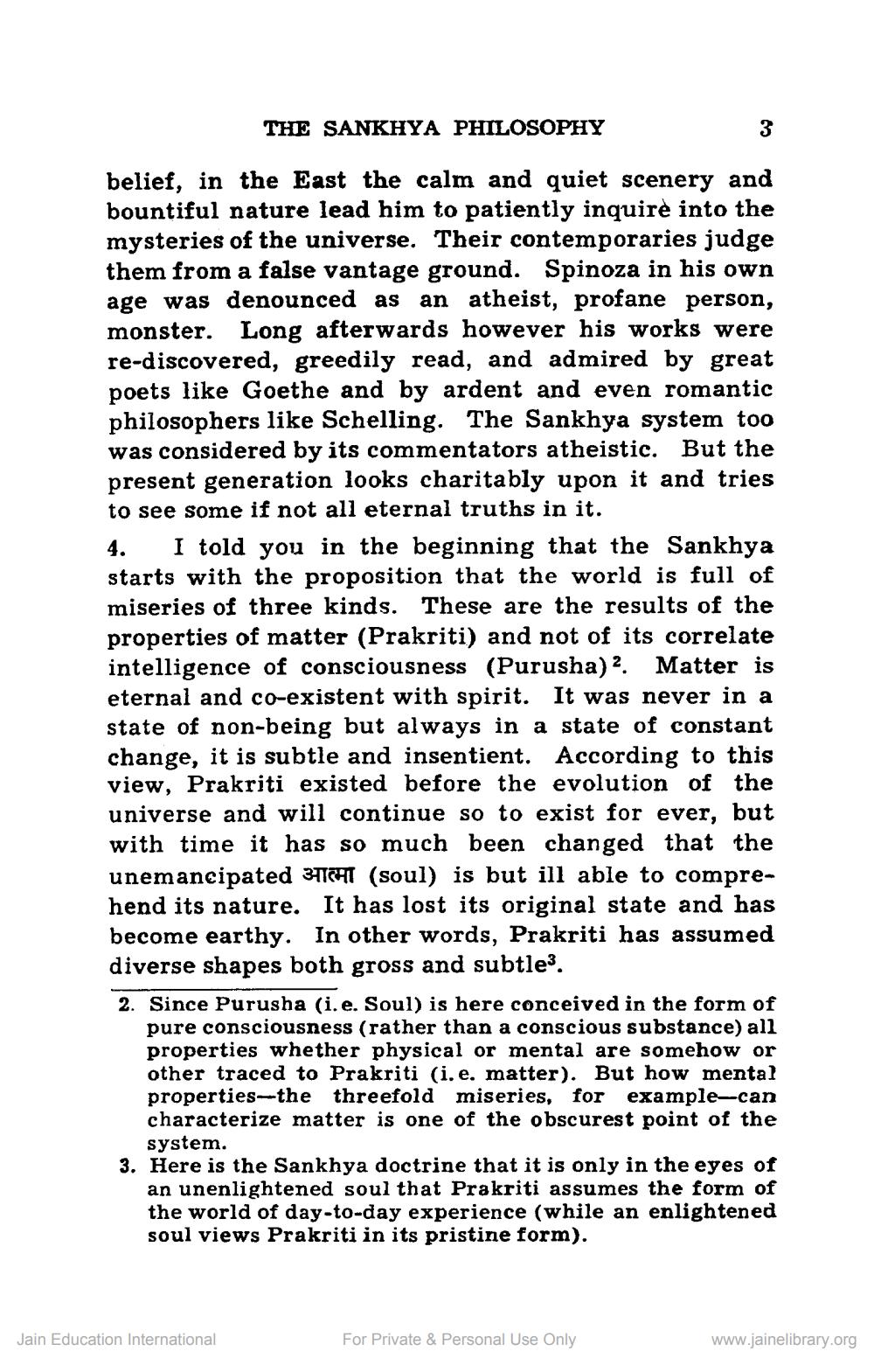________________
THE SANKHYA PHILOSOPHY
belief, in the East the calm and quiet scenery and bountiful nature lead him to patiently inquire into the mysteries of the universe. Their contemporaries judge them from a false vantage ground. Spinoza in his own age was denounced as an atheist, profane person, monster. Long afterwards however his works were re-discovered, greedily read, and admired by great poets like Goethe and by ardent and even romantic philosophers like Schelling. The Sankhya system too was considered by its commentators atheistic. But the present generation looks charitably upon it and tries to see some if not all eternal truths in it. 4. I told you in the beginning that the Sankhya starts with the proposition that the world is full of miseries of three kinds. These are the results of the properties of matter (Prakriti) and not of its correlate intelligence of consciousness (Purusha) 2. Matter is eternal and co-existent with spirit. It was never in a state of non-being but always in a state of constant change, it is subtle and insentient. According to this view, Prakriti existed before the evolution of the universe and will continue so to exist for ever, but with time it has so much been changed that the unemancipated 37TCH (soul) is but ill able to comprehend its nature. It has lost its original state and has become earthy. In other words, Prakriti has assumed diverse shapes both gross and subtle". 2. Since Purusha (i.e. Soul) is here conceived in the form of
pure consciousness (rather than a conscious substance) all properties whether physical or mental are somehow or other traced to Prakriti (i.e. matter). But how mental properties--the threefold miseries, for example-can characterize matter is one of the obscurest point of the
system. 3. Here is the Sankhya doctrine that it is only in the eyes of
an unenlightened soul that Prakriti assumes the form of the world of day-to-day experience (while an enlightened soul views Prakriti in its pristine form).
Jain Education International
For Private & Personal Use Only
www.jainelibrary.org




